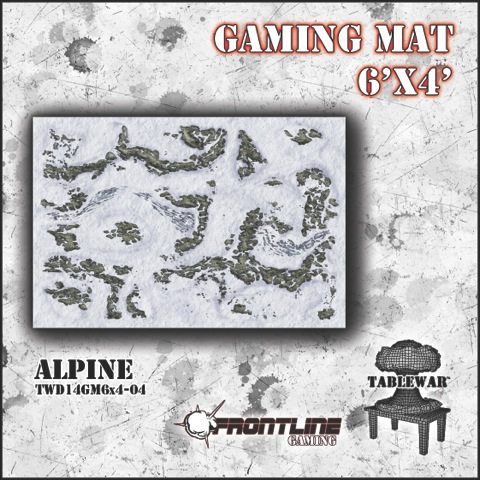2013 was the year of the Kickstarter. But kickstarters have a reputation for failing to deliver the promised target on time. It seems incredible that having hundreds of thousands of dollars in the bank could be anything but a project accelerator.
Paradoxically, one of the hardest things to manage is explosive, short term growth. In a previous article I mentioned GW’s early and mid 00’s financials. They brought a ton of money in off explosive growth of WHFB, 40K and LoTR, but didn’t end up making any profit? Why would that be? How is it similar to many kickstarter projects? How is any of this similar to the decline of TSR, the manufacturer of Dungeons and Dragons?
The Nature of Business
Running a business is risk. Whenever you meet a business owner (Hi, Reece!) you are meeting someone who risks their money, day after day. Businesses function really well when they have steadying growth. Unpredictably quick growth is a good problem to have, but it’s still a problem.
When you are growing fast, you need to ramp up your resources to capitalize on the uplift. And it’s often poorly understood just how hard this is. When you put on more staff, it often takes three months until they are contributing at a useful level. When you invest in hardware, technology, real estate, or business processes they can take months to implement and bed down.
When expanding for growth, profitability often drops. While there is such a thing as economy of scale, it’s much easier to build smoothly. When scaling up quickly, it’s nearly impossible to get exactly the right quantities of resource in exactly the right roles. This is exacerbated among KickStarters, where many companies are both trying something new, and something big. A dangerous combination.

Be Prepared
Many companies go into a kickstarter, without having tested their product under mass production. They cut their profits to pull in volume, on the basis of indicative quotes from China and other manufacturing hubs. Often these companies are dealing direct, instead of through an intermediary, as a cost cutting measure. This can be a result of false confidence – if you’ve never dealt direct with the manufacturer, then you are likely ignorant of the traps and best practice in doing so. It’s relatively common for things we might consider “within spec” to be tools used for renegotiation. When you initial test run of prints looks like crap, and is made out of the wrong plastic, this can be because your manufacturer wants you to agree to a 20% higher price? To quote Lord Vader: “I’m altering the deal. Pray I don’t alter it any further.”!

What does preparedness cost?
Suppose you nail the kickstarter, you meet the demand, you get everything shipped. You are in the clear, right? WRONG! You probably just put on a heap more staff, and organised the business in a way that might make sense during a kickstarter, but ultimately doesn’t at your normal size. Firing people is harder than hiring and training them! Once again you have to work out who to fire, and from where without unbalancing the company’s capability. Cut too much customer service, and you sales might drop further. Cut too much manufacturing and logistics, and your products might take weeks extra to actually ship. Every staff member is more risk to the business, and the bigger each contract gets, the more risk they carry too.
When Frontline gaming launched their (joint) kickstarter for the product now known as the F.A.T. Mat, the kickstarter occurred during the lead-up and execution of the LVO. Both were do or die propositions:
“The strain on the business financially, us physically/emotionally/mentally and the time investment were immense. We worked 16 hour days for a month, it was rough.”

Kickstarter at the same time as you run a huge event that could ruin your business?
We heard you like stress, so we put stress in… you get the idea.
Common Factors?
If you read between the lines of the article so far, you’ll find the crux of the problem. Scaling up requires more and more changes, and these are often changes that are quite lumpy, hard to reverse, and take a while to bring into effect. Now consider it from the perspective of GW – they weren’t adding a few extra machines and staff, they were adding entire stores populated with three or more staff. GW didn’t do this terribly well, they set up expensive stores in great locations on the basis of the available foot traffic. To achieve this, they were often smaller than the stores GW was closing. Where previously GW stores might have four to six tables, with storage room for extra terrain, they now had three or four at best, and kept three perminantly set up for demo games of the three main systems.
The result was an increase in costs, seemingly across the board and eventually the birth of the “bunker” concept, to try and recoup the loss of existing players who were alienated from the smaller stores. And here is the problem: once these stores were opened, how much does it cost to close them? In Australia, commercial leases are usually 5 year minimum commitments. Just as expensive is the cost of staff. Most GW stores from the time had a minimum of three full time equivalents of staff.

Failure to lose the bloat
Getting rid of bloat in a business is a bit like losing weight in real life: it’s very hard work, people are usually inconvenienced while you do it, but if you don’t get it sorted it can kill you.
GW would have been drawing parallels at this time to the fate of TSR, the original owner of the dungeons and dragons IP. In 1979 they were subject to massive growth, with eight fold growth per annul, and massive public recognition. Attempting to capitalise on this wave, they invested heavily. The company grew to 120 staff, they had groups and staff fostering potential movie spin-offs and other uses of IP. And then it crashed in the early 80s. Unlike GW, TSR believed in their business model. Unable to shed staff, they bled money and limped on until Hasbro’s eventual take over. Saying that Hasbro’s would buy TSR, in 1980, would have been like me telling you that Microsoft will buy Facebook in three years!
So the risk to business owners is clear – if you overshoot your growth with investment, then you are going to put yourself in hot water! Those of us who don’t own a business tend to look on growth as a positive, and one managed via the meat grinder approach (turn the handle faster). But in many cases, growth adds complexity and risk. Profit margins which look exorbitant from the perspective of the buyer can take a lot less erosion than we tend to think.
Raison D’être
So next time your kickstarter is delayed, spare a thought for the challenges they are going for. In most cases, these projects aren’t delayed through malice, incompetence, or any other internal factor.
Next time a tournament struggles to nail down a venue while increasing the size of a tournament, ask yourself if they might need to take a bit of care before they sign a contract that could bankrupt their company.
And most importantly, if you meet someone who runs a business, big or small, offer to buy them a beer – they probably need one!


I do have to say…the FAT mat kickstarter was extremely successful in it’s time to delivery. Though I didn’t go in with the original kickstarter, I was amazed by how fast you guys delivered.
Had I been aware of your follow through, I definitely would have originally backed it.
Either way, I have one of your mats now, and am looking forward to buying three more at Nova!
-G
Glad you got one and like it! And yeah, not to pat ourselves on the back, but we did a good job with tour KS. It took a LOT of work though, lol, I can easily see why many companies don’t pull it off.
I’m not sure how exactly they structured it. But I imagine that FLG and Tablewar put an order for MOQ (minimum order quantities) for all the mats, and upped the orders based on the kickstarter?
It went off WAY too smoothly otherwise.
If you guys didn’t do that, then honestly, hats off! I have no idea how you pulled it off.
Well, we did come into it with a strategy for handling big success or minimal success. I can’t reveal our trade secrets as we may do it again, but, it worked quite well. It took a seriously herculean effort to pull off, but it worked.
Great article – investing in a customer base is just as dangerous as investing elsewhere. If you piss them off or someone else snags their loyalty you can still sink no matter what you do. Honor and Loyalty and Excellent Customer Service will go a long way in this fickle and ever changing environment we dwell in. Everyone fears “the next cool thing”. Having stable and incorruptible clients and consumers and keeping them and always finding more is powerful stuff indeed. Time and time again I see stores flourish under a single champion and die once that person moves on. Cheers! And thank you for placing your trust in my event.
Love the article! You hit the nail on the head in terms of Kickstarter. Lots of great ideas that are unfortunately not well thought out on the business and manufacturing side of things before the project launches. My favorite story is the one where the kickstarter was for a very popular miniature company whose owner contacted a Chinese manufacturer ahead of time to find out if they would be capable of manufacturing the kickstarted items and if they would take on the manufacturing of said items after the kickstarter was funded. Well it funded for around $100,00 and when the owner went to the Chinese manufacturer and asked how much it would cost to make the models for the backers they promptly informed the kickstarter owner that it would cost $100,000.
Yeah, no joke, the Chinese play hardball. They do not take it easy on you at all.
Yeah, We’ve found at my work, that they are incredibly skilled at incrementally putting upward pressure on prices. You basically have to be prepared to walk away. They do not mess around!
My rule of thumb is to have a fully qualified, non-Chinese second source who has 20% of the business if you deal with a Chinese company. If you can’t find a second source outside of China, you need three in China.
If there is only one source, we haven’t come up with a solid strategy, there is just so much volatility in terms of capability, price, delivery, etc.
It sounds like I’m painting with too broad a brush, but I can’t think of a solid counter-example after a decade of doing it!
Like my old financial engneering prof told me back in my university fays. When you sign a contract with someone who knows more about somethng than you, you can guarentee they are getting the better deal.
I gotta say, when I started reading this I thought you were trying to say that FLG was going out of business because of the FAT mats!
Sorry!
I think Reece has hinted that there will be future FAT mat developments?
Notably to support games that involve wings of different letters, and commanders of various zones… with dropships.
Growth is a mixed bag for sure regarding risk, which is why looking for a good living wherein you still have to work (although independently — small business, baby!) makes more sense than wealth and delegation of most duties.
Great article
TinBane is a very good writer, I always like seeing one of his articles.
Reece has worked out that I’m a tremendous narcissist. As long as I keep getting narcissistic supply, the articles will keep flowing 😛
Hahaha, hey, I only say I like the work if I do, so it is totally genuine.
Yep, and Kickstarter does not give Stock in the start up either (like investing in a company should)… so all a customer is doing is “risking” for a “discount” (if the product even makes it to market), which is not a good investment at all IMHO.
.
Some stock I bought about five years ago at 11.5; http://www.marketwatch.com/investing/stock/pom
.
Great article.
So I’m not complaining but did anyone expect business financing coming to frontline gaming? lol. Good article and I never knew that stuff about the d&d company. Or that hasbro owns it now.
Wizards of the Coast owns D&D now, and tried to kill it about 6 years ago 😉
And just for clarity, Hasbro is WoTC’s parent company.